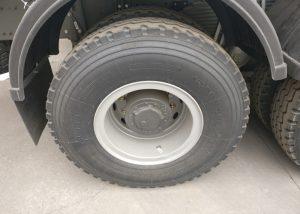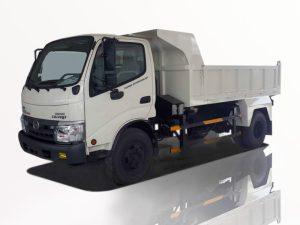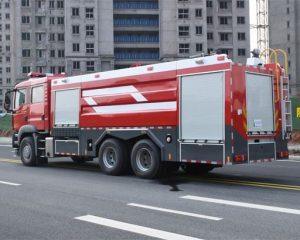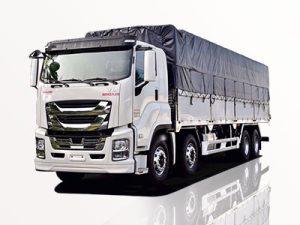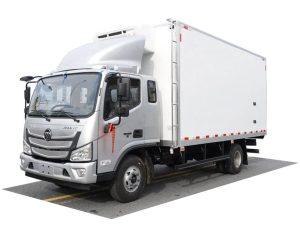Monday to Saturday - 8:00 -17:30
Understanding Fuel Tanker Truck Capacity: A Comprehensive Guide
When it comes to the transportation of fuel, the capacity of a fuel tanker truck plays a crucial role in logistics, efficiency, and safety. This article delves into various aspects of fuel tanker truck capacity, exploring different types of tankers, their specifications, and how to choose the right one for your needs. Whether you are in the logistics business, a fleet manager, or simply curious, this guide is here to illuminate everything you need to know.
Table of Contents
- 1. Introduction
- 2. What is Fuel Tanker Truck Capacity?
- 3. Types of Fuel Tanker Trucks
- 4. Tank Capacity Standards
- 5. Factors Influencing Fuel Tanker Capacity
- 6. Calculating Fuel Tanker Capacity
- 7. Practical Examples of Fuel Tanker Truck Capacities
- 8. Tips for Choosing the Right Fuel Tanker Truck
- 9. FAQ
1. Introduction
Fuel tanker trucks are essential in the transportation of liquid fuels such as gasoline, diesel, and other petroleum products. Understanding the capacity of these vehicles is vital for ensuring efficient transportation and managing costs effectively. Fuel tanker capacity typically refers to the maximum volume of liquid that a truck can carry, which is determined by various factors including the type of truck, regulatory standards, and design specifications. In this comprehensive guide, we will explore the intricacies of fuel tanker truck capacity, providing practical insights and tips for anyone involved in the industry.
2. What is Fuel Tanker Truck Capacity?
Fuel tanker truck capacity refers to the maximum amount of liquid fuel that a tanker can safely carry. It is usually measured in gallons or liters, and it plays a crucial role in determining how effectively a fuel transport operation can function. A larger capacity allows for fewer trips, which can result in reduced transportation costs and minimized operational downtime.
Variable Capacity
The capacity of fuel tanker trucks can vary significantly based on several factors:
- Truck Type: Different trucks are designed for different purposes. For instance, a standard fuel truck may carry 5,000 to 10,000 gallons, while a specialized tanker may hold more.
- Regulatory Limits: Regulations regarding weight and size can impact maximum capacity. Always adhere to local laws when determining load limits.
- Fuel Type: The density of the fuel being transported can alter how much a tanker can carry. Lighter fuels may allow for higher volume loads.
3. Types of Fuel Tanker Trucks
Fuel tanker trucks come in various types, each designed for specific applications. Understanding the different types can help in making informed decisions regarding capacity and use.
1. Single Compartments
These tankers have one large compartment and are often used for transporting a single type of fuel. Their capacity usually ranges between 5,000 and 12,000 gallons.
2. Multi-Compartment Tankers
Multi-compartment tankers are designed to carry multiple types of fuels simultaneously. Each compartment is separated, allowing for the transport of different grades of fuel without contamination. Their total capacity can range from 5,000 to 10,000 gallons per compartment.
3. Bottom-Loading Tankers
These tankers feature a bottom-loading design which enables faster and safer loading. Their capacities can vary, but they generally carry between 6,000 and 10,000 gallons.
4. Vacuum Tankers
Designed for transporting hazardous liquids, vacuum tankers come with a vacuum pump that allows for the removal and transport of liquid waste or fuel. Their capacities can reach over 10,000 gallons.
5. Fuel Delivery Trucks
Common in the retail sector, these are typically smaller trucks capable of carrying around 1,000 to 5,000 gallons, ideal for localized deliveries.
4. Tank Capacity Standards
Various standards regulate the construction and operation of fuel tankers. Compliance with these standards not only ensures safety but also affects capacity considerations.
1. DOT Regulations
The Department of Transportation (DOT) sets forth regulations that dictate the maximum capacity of tankers based on the design and materials used. For example, a DOT-approved tanker must meet specific construction guidelines to ensure it can withstand certain pressures and stresses.
2. International Standards
For cross-border operations, international standards such as those set by the International Maritime Organization (IMO) may also apply, particularly for tankers that transport fuels over waterways.
5. Factors Influencing Fuel Tanker Capacity
Several factors can influence the overall capacity of a fuel tanker truck. Understanding these can help operators make more informed decisions on truck selection and utilization.
1. Truck Design
The design features, such as the shape and size of the tank, directly affect the capacity. Cylindrical designs are typical for their strength and efficiency.
2. Weight Restrictions
Trucks must adhere to weight regulations, which limit how much fuel can be carried. If a fully loaded truck exceeds weight restrictions, operators may need to reduce the fuel load.
3. Fuel Density
The density of fuel types influences the total capacity. For example, diesel fuel is denser than gasoline, affecting the amount that can be carried based on the same volume.
4. Environmental Considerations
In certain areas, environmental regulations may impose restrictions on tanker sizes or dictate specific designs to minimize the risk of spills.
6. Calculating Fuel Tanker Capacity
Calculating the capacity of a fuel tanker involves several considerations, including the tank’s dimensions and shape.
Step-by-Step Calculation
- Measure Dimensions: Obtain the length, width, and height of the tank.
- Determine Shape: Identify the shape (cylinder, rectangular, etc.) for calculation purposes.
- Use Volume Formulas: Use the appropriate formula to calculate the volume. For a cylindrical tank, the formula is Volume = π × radius² × height.
- Convert Measurements: Convert your measurements to gallons or liters based on your needs.
7. Practical Examples of Fuel Tanker Truck Capacities
| Tanker Type | Typical Capacity (Gallons) |
|---|---|
| Single Compartment Tanker | 5,000 – 12,000 |
| Multi-Compartment Tanker | 10,000 – 20,000 |
| Bottom-Loading Tanker | 6,000 – 10,000 |
| Vacuum Tanker | 10,000+ |
| Fuel Delivery Truck | 1,000 – 5,000 |
8. Tips for Choosing the Right Fuel Tanker Truck
Choosing the right fuel tanker truck is essential for efficient operations. Here are some tips to consider:
1. Assess Your Needs
Evaluate the type and volume of fuel you regularly transport to determine the appropriate tank size.
2. Understand Regulations
Familiarize yourself with local regulations regarding tanker capacities and safety standards to avoid penalties.
3. Opt for Quality
Choose a well-constructed tanker from a reputable manufacturer to ensure safety and durability.
4. Consider Maintenance
Evaluate the maintenance requirements and ease of use for the tanker, as this can affect long-term operational costs.
5. Fuel Type Compatibility
Make sure the tanker is suitable for the specific type of fuel being transported, as various fuels have different characteristics.
9. FAQ
1. What is the average capacity of a fuel tanker truck?
The average capacity of a fuel tanker truck ranges from 5,000 to 12,000 gallons, depending on its design and purpose.
2. What regulations govern fuel tanker capacity?
Regulations set by the Department of Transportation (DOT) and international standards govern the maximum capacities and safety requirements.
3. Can a fuel tanker carry multiple types of fuel?
Yes, multi-compartment tankers can carry different types of fuel simultaneously without cross-contamination.
4. How do weight restrictions affect fuel tanker capacity?
Weight restrictions impose limits on how much fuel can be transported to ensure safety and compliance with road regulations.
5. What factors affect the capacity of a fuel tanker?
Factors include truck design, weight restrictions, fuel density, and environmental considerations.
6. How do I calculate the capacity of my fuel tanker?
To calculate the capacity, measure the tank’s dimensions, identify its shape, and apply the proper volume formula based on its shape.


